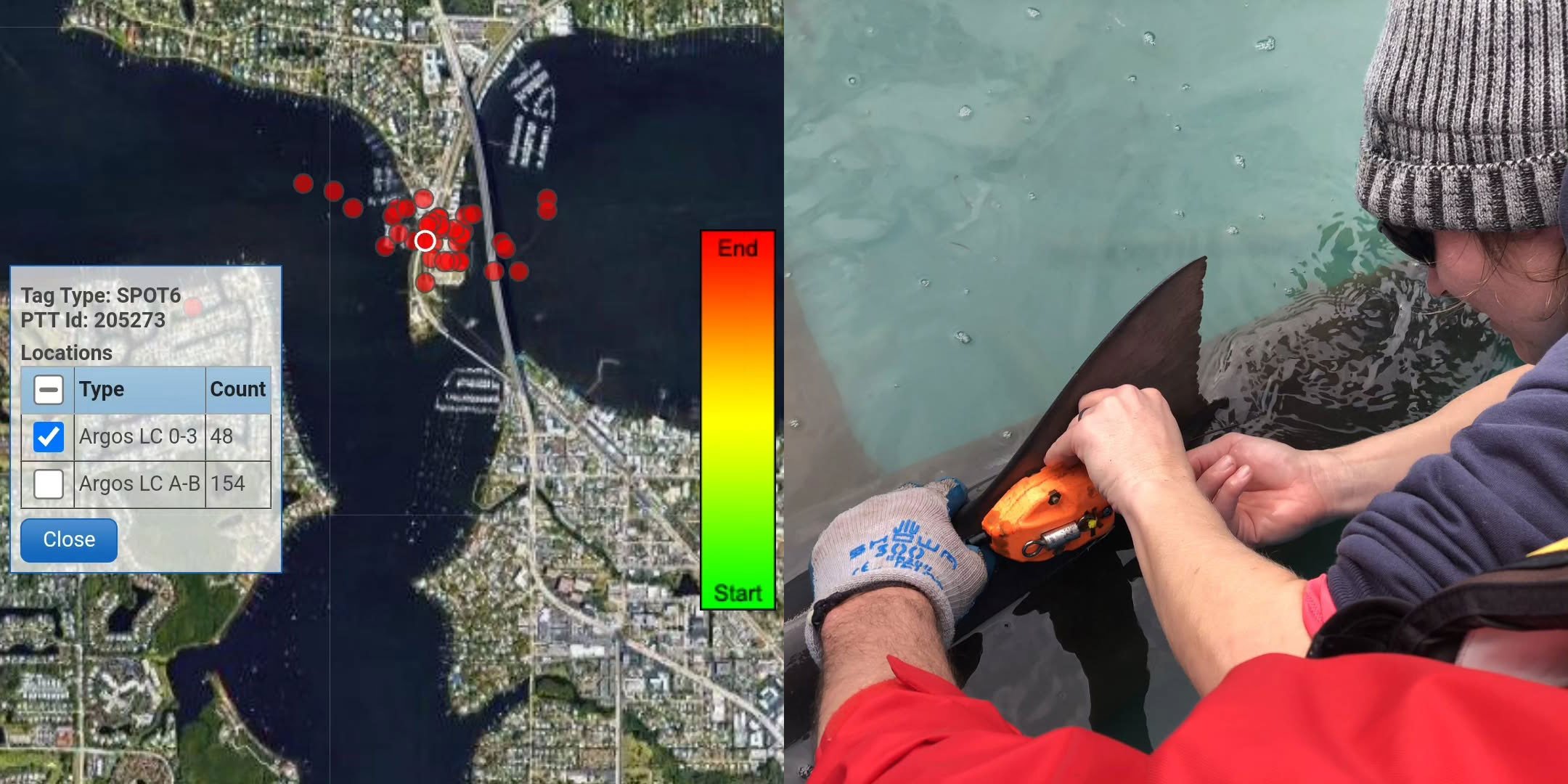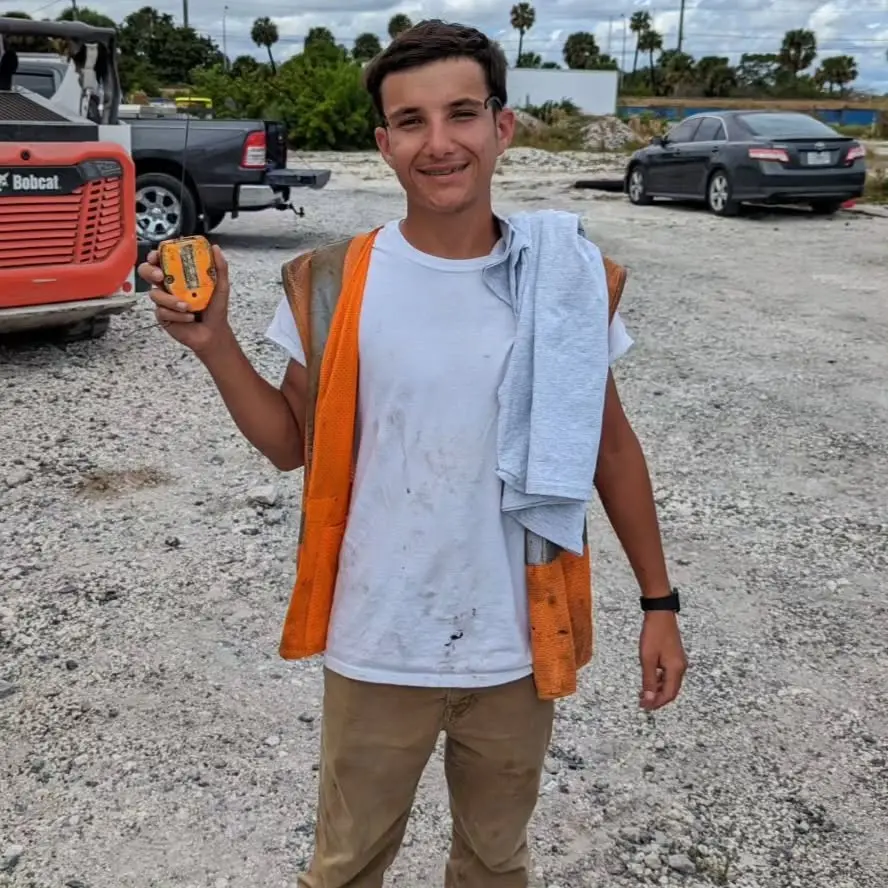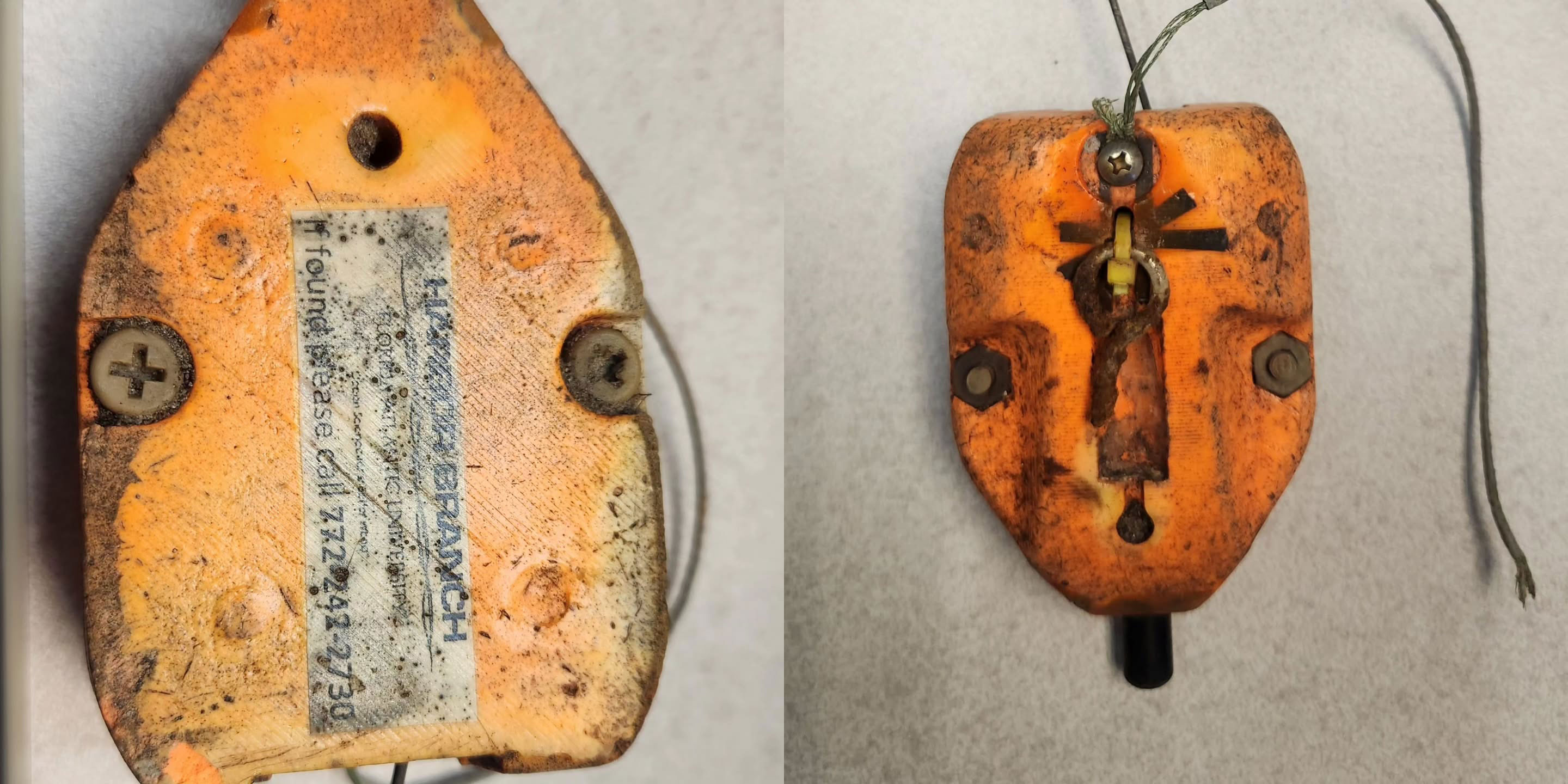Citizen Participation Saves the Day and the Data
Shark research is often a race against time, tides, and technology, and sometimes, it’s the public that helps us win.
In 2022, we incorporated a day of bull shark tagging into a hands-on field experience for a class led by Dr. Matt Ajemian from Florida Atlantic University’s Harbor Branch Oceanographic Institute. Using baited drumlines in the St. Lucie River, we caught and tagged a 1.73-meter (6-foot) female bull shark as part of our Save Our Seas Foundation supported project.
This shark was fitted with a custom biologging tag package designed to record detailed data on movement and environmental conditions. While tag recovery went smoothly for most of our study (we recovered 17 out of 19), this one proved… problematic. After the tag detached and surfaced, we were alerted via the satellite signal and launched a recovery mission. Unfortunately, the signal was localised near a narrow spit crowded with docks, bridges, and heavy boat traffic, making retrieval tricky. After several days of searching, we reluctantly accepted that the tag was likely lost to the muddy river system. That is, until a sharp-eyed citizen scientist changed everything.

(left) The location map of the tag, (right) shark tagging. Photo © Fisheries Ecology and Conservation Lab (FEC Lab)
Land Shark?
Almost two years later, a construction worker spotted something odd during a routine workday. Nestled in a pile of sand and debris on land, near the same area we had searched intensively, was a small, orange device. Weathered but still intact, it stood out enough for him to investigate. Thanks to its clear labelling and the construction worker’s curiosity, he reported the find to Harbor Branch.
That weather-beaten orange object turned out to be the long-lost shark tag! It had apparently been scooped up during dredging and deposited on the island, hiding in plain sight for who knows how long. We were stunned, proud of the tag’s durability, and eager to see if the internal accelerometer data could be accessed.
Thanks to one individual’s keen observation and willingness to act, the tag is back in researchers’ hands, and with it, the rest of that shark’s story.

Zamora, the construction worker who found the lost tag. Photo © Fisheries Ecology and Conservation Lab (FEC Lab)
Why Tag Recovery Matters
Tags like the one Zamora found aren’t just expensive, they’re scientific goldmines. Our biologging tags collect data on shark depth, body movement, orientation, and water temperature. Combined with acoustic tracking, this information gives us a detailed picture of how sharks navigate their environment and respond to changes in their ecosystem.
But here’s the catch: all that data is stored inside the tag. If it’s not physically recovered, it’s gone for good. That’s why stories like this are more than feel-good moments, they’re essential to advancing science.

The recovered tag with the back (left) and front (right). Photo © Fisheries Ecology and Conservation Lab (FEC Lab)
The Power of Public Participation
This isn’t the first time a lost tag has made its way back thanks to citizen science, and it won’t be the last. Every recovered tag helps stretch research budgets further, reduces environmental waste, and deepens our understanding of ocean life.
What You Can Do
If you ever find a scientific tag or piece of equipment near the water, here’s how you can help:
- Look for ID numbers or contact information on the device.
- Take a photo and record the location.
- Contact the nearest marine research institution, or use NOAA’s Tag Reporting page.
Your actions might just unlock a hidden chapter in an animal’s story, and provide researchers with crucial insights into ocean life. Science doesn’t just happen in labs or on boats. Sometimes, it happens because someone takes a closer look at what the tide brings in.
Thanks to observant citizen scientists, the ocean’s secrets are a little less out of reach.
